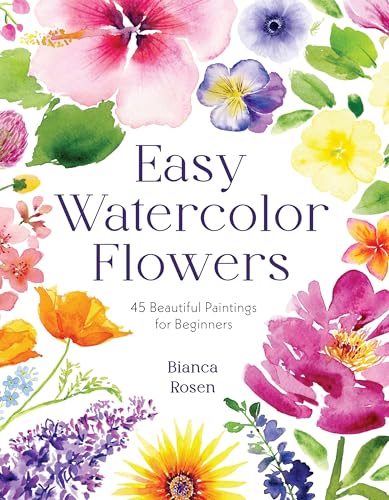Watercolor Workbooks: Beginner’s Guide & Essential Supplies
Unleash Your Inner Artist: Exploring Beginner-Friendly Watercolor Workbooks & Essential Supplies 🎨
Watercolor painting, with its fluid beauty and expressive potential, can be a rewarding hobby. But starting out can feel daunting. Thankfully, beginner-friendly watercolor workbooks and readily available supplies make it easier than ever to dive in! This article will explore what makes a good beginner’s workbook and the essential materials you’ll need to create stunning watercolor art.
Beginner-Friendly Watercolor Workbooks: Your Guided Journey 🗺️
The key to successful watercolor learning is starting with manageable projects and clear guidance. Beginner-friendly workbooks are designed to do just that.
What Makes a Workbook Beginner-Friendly? 🤔
- Step-by-Step Instructions: These workbooks break down complex techniques into simple, easy-to-follow steps. Think “paint this shape,” then “add this color,” and so on.
- Pre-Drawn Outlines: Many workbooks feature pre-drawn outlines of images, allowing you to focus on color mixing, brush control, and watercolor techniques without the pressure of perfect drawing. This is particularly helpful in the beginning.
- Practice Exercises: Dedicated sections for practicing specific strokes, color blending, and layering techniques. These are crucial for building a solid foundation.
- Color Mixing Guides: Beginners often struggle with color mixing. Good workbooks include charts and examples to help you understand how to create the colors you need.
- A Variety of Projects: From simple washes to more detailed illustrations, a well-rounded workbook offers a range of projects to keep you engaged and challenge you as you progress.
- Durable Paper: Specifically made for watercolor, preventing warping and allowing you to layer colors without damaging the surface.
The Ugalqan Watercolor Workbook: A Closer Look 🧐
The Ugalqan Watercolor Workbook, referenced in the URL, appears to be designed with these beginner-friendly features in mind. While specific details would require reviewing the workbook itself, the “Beginner Friendly Workbooks” description strongly suggests it prioritizes accessible learning. Look for features like pre-printed outlines, step-by-step instructions, and exercises focused on core watercolor skills.
Essential Watercolor Supplies for Beginners 🖌️
Beyond the workbook, you’ll need a few key supplies to get started. Don’t feel you need to buy everything at once! Begin with the basics and expand your collection as you gain experience.
Watercolor Paints: Tubes vs. Pans? 🎨
- Tubes: Offer more pigment concentration and are generally preferred by experienced artists. However, they can be a bit messy for beginners. A starter set of 12-24 colors is sufficient.
- Pans: Convenient and less messy than tubes. Ideal for beginners who want to experiment with watercolor without a large investment. Start with a palette containing a range of primary and secondary colors.
Watercolor Brushes: A Variety of Shapes and Sizes 🖌️
- Round Brushes: Versatile for details, washes, and line work. Invest in a few different sizes (small, medium, large).
- Flat Brushes: Good for washes and creating broad strokes.
- Angle Brushes: Useful for creating sharp edges and adding details.
Opt for synthetic brushes to start. They are more affordable and easier to maintain than natural hair brushes.
Watercolor Paper: The Foundation of Your Art 📝
- Cold Press: Textured surface, great for a variety of watercolor techniques. A good all-around choice for beginners.
- Hot Press: Smooth surface, ideal for detailed work.
- Rough: Heavily textured surface, creates unique effects.
Choose paper specifically designed for watercolor, with a weight of at least 140 lb (300 gsm) to prevent warping. Watercolor paper pads or blocks are a convenient option.
Other Helpful Supplies 🛠️
- Palette: For mixing colors. A ceramic plate or a plastic palette with wells will work.
- Water Container: Two containers are ideal: one for rinsing your brushes and one for clean water to dilute your paint.
- Paper Towels or a Sponge: For blotting excess water from your brush.
- Masking Tape: To secure your paper to a surface and create clean edges.
- Pencil and Eraser: For sketching outlines (if your workbook doesn’t provide them).
- Masking Fluid (Optional): To protect areas of your paper from paint.
Embark on Your Watercolor Journey! 🚀
With a beginner-friendly workbook and the right supplies, you’ll be well on your way to creating beautiful watercolor paintings. Don’t be afraid to experiment, make mistakes, and most importantly, have fun! The journey of learning watercolor is as rewarding as the art you create.





Post Comment